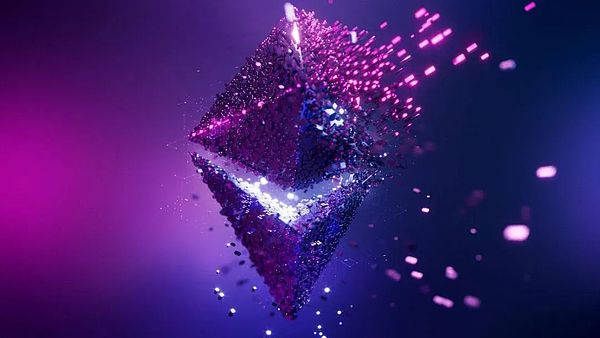Ethereum’s dominant position in the field of tokenized real-world assets (RWA) is increasingly strengthening. Recently, the Avalanche Avax Foundation announced that they will purchase $50 million worth of tokenized physical assets on their chain. This may seem like a trivial news, but I believe it is actually one of the important signs of future development. Let me try to explain why Ethereum has consolidated its early dominance in this most important tokenized real-world asset market.
First, it should be noted that tokenized real-world assets (RWA) are currently the most important growth area in cryptocurrencies. Every type of asset in the world will eventually be tokenized. This field has already entered the vertical part of its S-curve. When evaluating the success of a specific chain, the market value of tokenized assets may soon become as important as DeFi TVL or stablecoin market value, or even more important.
In terms of the market structure of tokenization platforms, the construction cost of tokenization platforms/protocols is high. In the tokenization design process, a series of reasonable and asset-related choices are involved. This naturally leads to market fragmentation.
The huge potential market and fragmentation will ensure that there are many participants in this competitive field.
- Observing Whales Understanding Bitcoin’s Market Dynamics through On-Chain Analysis
- BlackRock joins forces with an Indian financial services company to establish a joint venture and actively enters the Asian market.
- Lattice Encryption Investment and Financing Research What is the current status of projects that completed seed round financing in 2021?
Avalanche is purchasing $50 million worth of tokenized assets to help drive their tokenization platform. This subsidy may be important for them because, as far as I know, they are already lagging behind in this fiercely competitive market.
Another reason why Avalanche invested $50 million may be to stimulate a successful virtuous cycle by increasing their tokenized asset metrics. I don’t think they will have an easy time competing with Ethereum. Of course, this industry will be very large, and even as a small part of the market, they may carve out important business.
Several key indicators have emerged in the field of tokenized assets. Let’s explore them and see why Ethereum performs well in this regard.
First, the market value of on-chain tokenized assets will be similar to the market value of stablecoins. The higher the market value, the better.
Currently, Ethereum has approximately $300 million worth of tokenized US Treasury bills, as well as tokenized assets of other asset categories (the quantity of which is uncertain. For example, you can buy Coinbase COIN stocks on Ethereum).
Stellar also has an additional $300 million worth of tokenized US Treasury bills. But don’t get too excited about Stellar: the most important factor in the growth of tokenized assets may be the on-chain market, in which Ethereum dominates.
For example, as far as I know, Stellar’s T-Bills are tokenized through one platform (Franklin Templeton), while Ethereum’s T-Bills are tokenized through 8 different competing platforms, including Franklin Templeton.

The on-chain market is crucial for the growth of tokenized assets as they enable the practical benefits of tokenization: the ability to transact and exchange with other participants.
This summer, traditional finance and governments are very excited about the inherent benefits of tokenization, including instant settlement, fractional ownership, and global reach. This is a very positive sign. But this is only the first stage.
In the coming quarters or years, traditional finance will also be excited about tokenization’s benefits for as many participants as possible, mature money legos, and as much other liquidity as possible to minimize risk.
This is where Ethereum has its strongest advantage in this critical market:
You can tokenize any asset on any chain, but only on Ethereum do these assets have: 1) the strongest property rights (from our focus on maximum trust and neutrality); 2) the most users and liquidity to trade with. Ethereum’s ecosystem, users, integrations, tokens, chains, etc., are 10x to 1000x larger compared to other L1s; 3) the best currency legos to use. Ethereum’s applications and DeFi protocols are 10x to 100x more mature, numerous, diverse, and well-governed compared to other L1s.
I mentioned a few key metrics that have emerged in this space. The first one is market cap.
The second metric is the proportion of market cap used for DeFi, i.e., the subset of market cap used for DeFi. Ethereum has already achieved tremendous success in this regard and will continue to do so.
The third metric I want to emphasize is the proportion of tokenized assets’ market cap financed on-chain. There’s a big difference between a company or on-chain foundation investing $50 million to tokenize their assets and customers paying you $50 million in USDC on-chain to tokenize their assets. One is inventory, the other is business.
Public chains are big markets. Ethereum’s maximum trust and neutrality are like a market security team.
Ethereum’s large user base, operator and liquidity networks are like a thriving market filled with goods. And the top-notch money legos and infrastructure are there to minimize friction and make purchases cheap and enjoyable.
As RWAs become globally adopted, we can expect Ethereum and our layer 2 extensions to capture the majority of the growth. Not just because we are the best choice for tokenization, but because ETH is the best market in the world.
Like what you're reading? Subscribe to our top stories.
We will continue to update Gambling Chain; if you have any questions or suggestions, please contact us!